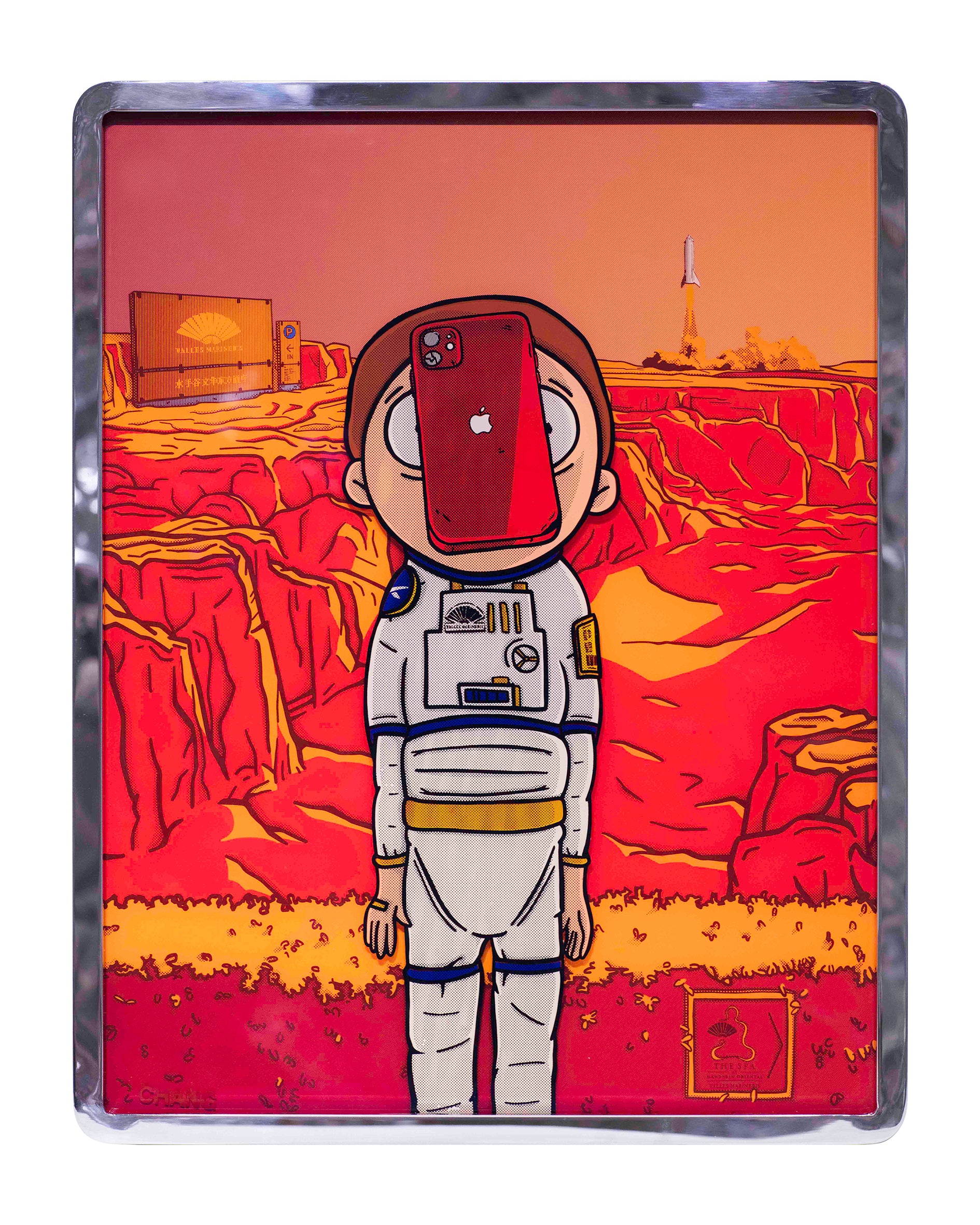
The Son of Man
Ernest Chang
$67,500.00
Exhibition Dates: Mar 18 – Jun 4, 2023
Opening Hours: Wed-Sun, 11AM-7PM
THE STALLERY
82A Stone Nullah LaneWan Chai, Hong Kong
In the same vein as 2021’s Bling Dynasty, which explored contemporary (pre-pandemic) global consumerism by bringing together Chinese and Western culture and artistic styles in provocative visual hybrids, Space Rich will again entice viewers by its incorporation of recognizable figures and icons from pop culture and luxury brands in its compositions.
Apart from The Happy Donor, which was commissioned by McCafé Hong Kong as part of the well-received group exhibition SubXture at the K11 Art Mall earlier in 2022, all works featured in Space Rich are created in 2021-2023 and have not been exhibited before.
Prestige – Art Month: Shows and Exhibitions to Visit this March 2023
U Lifestyle –《Space Rich》展帶你上火星 絲網印刷畫/雕塑反思消費主義’

$67,500.00
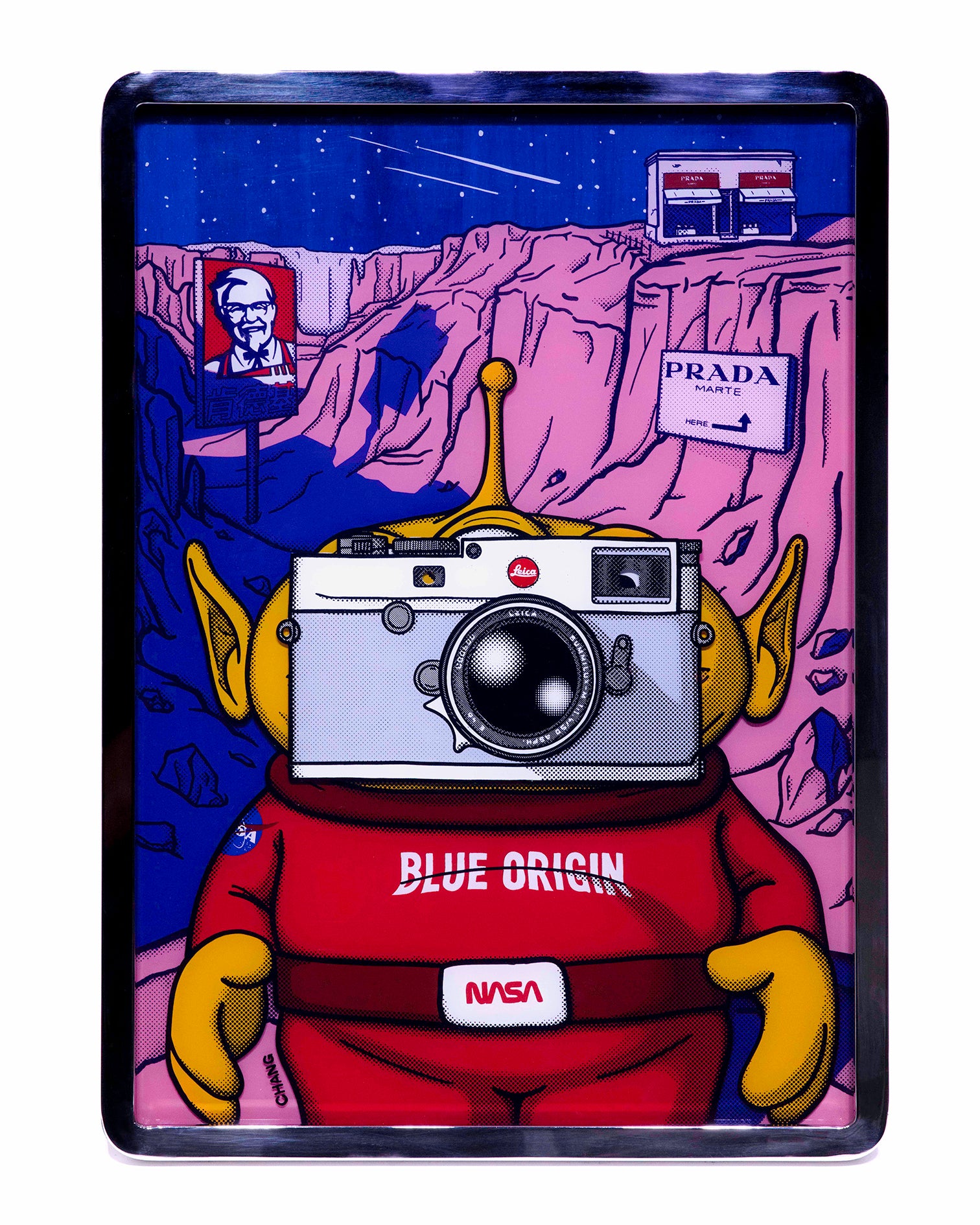
$63,600.00
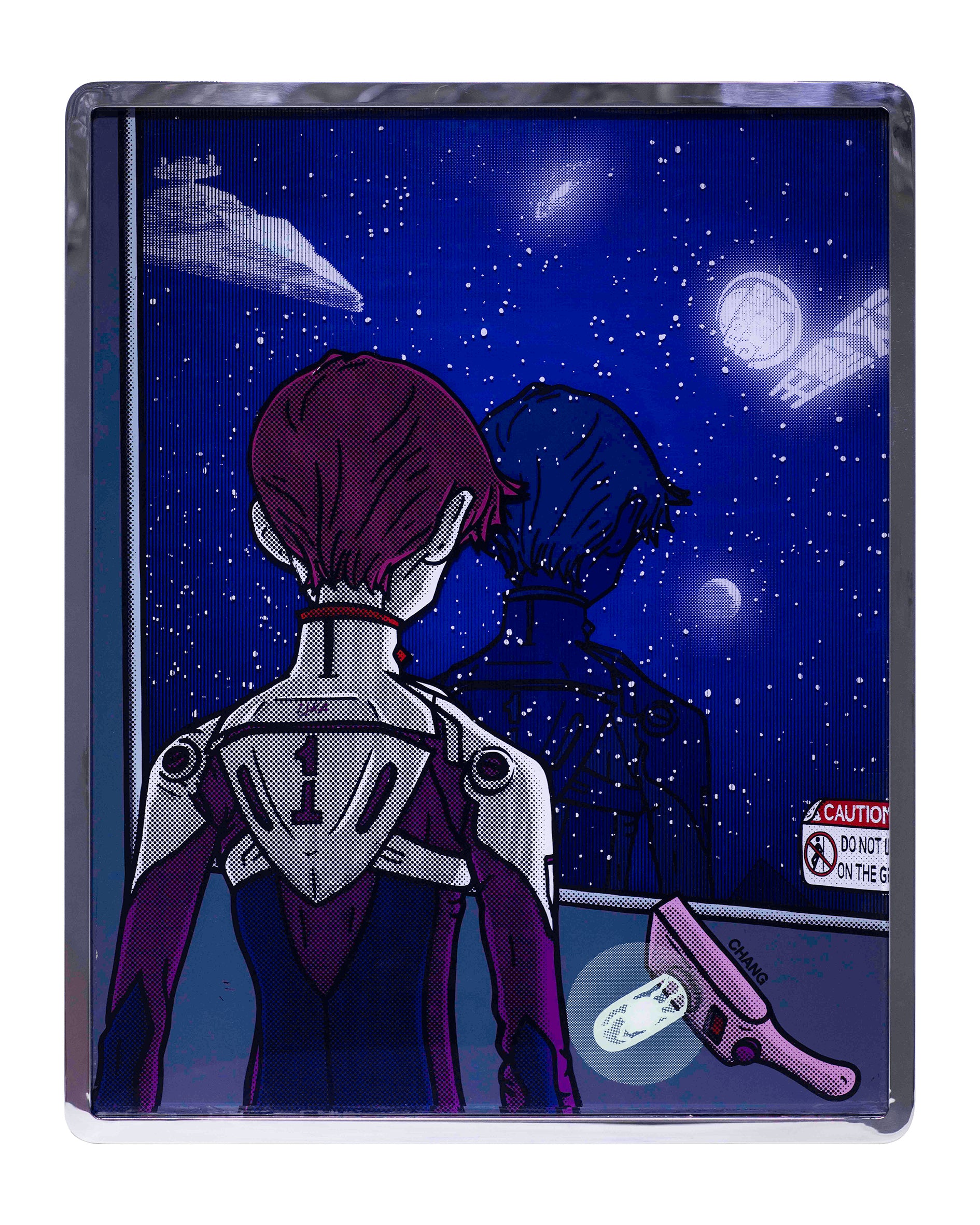
$77,700.00
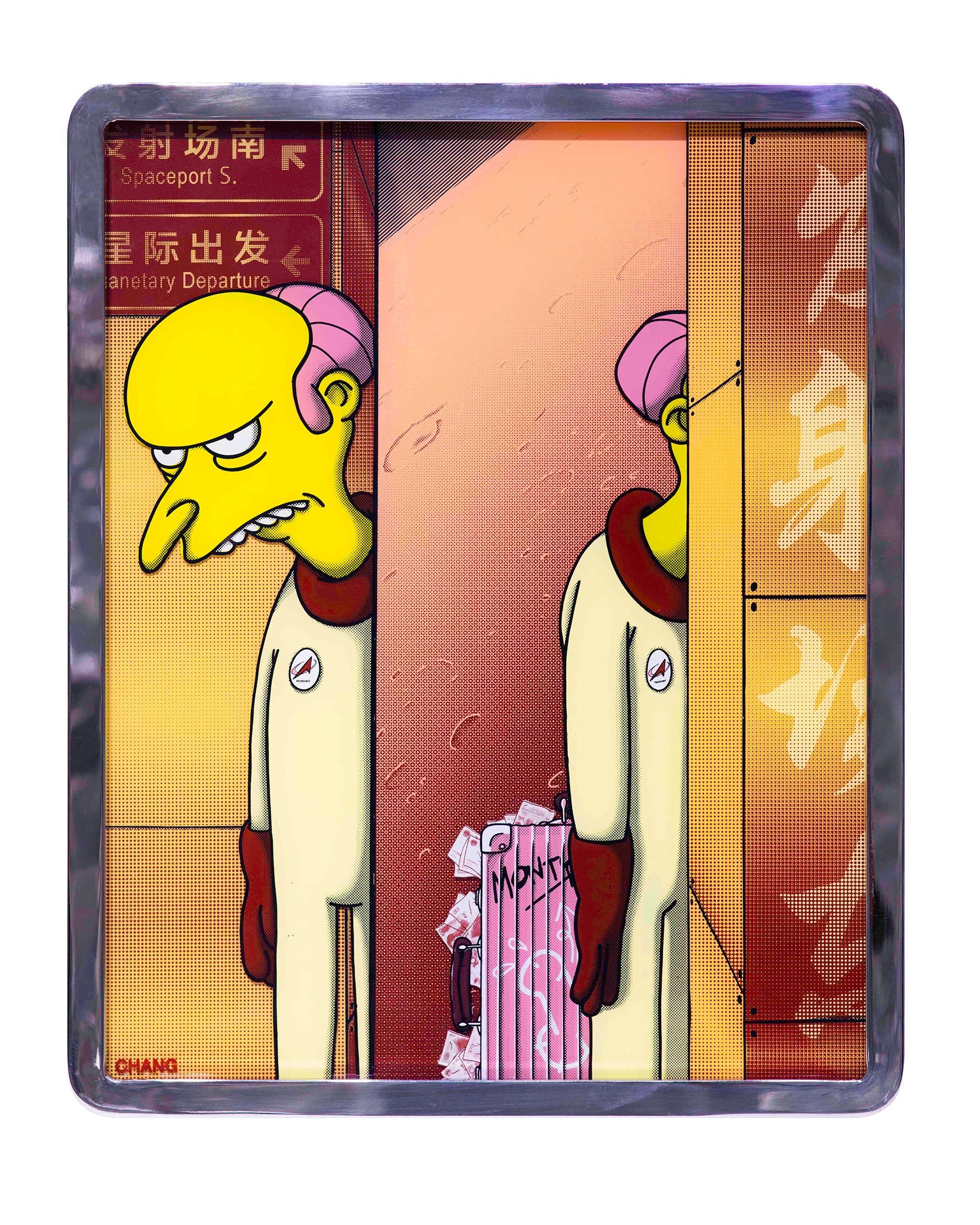
$51,800.00
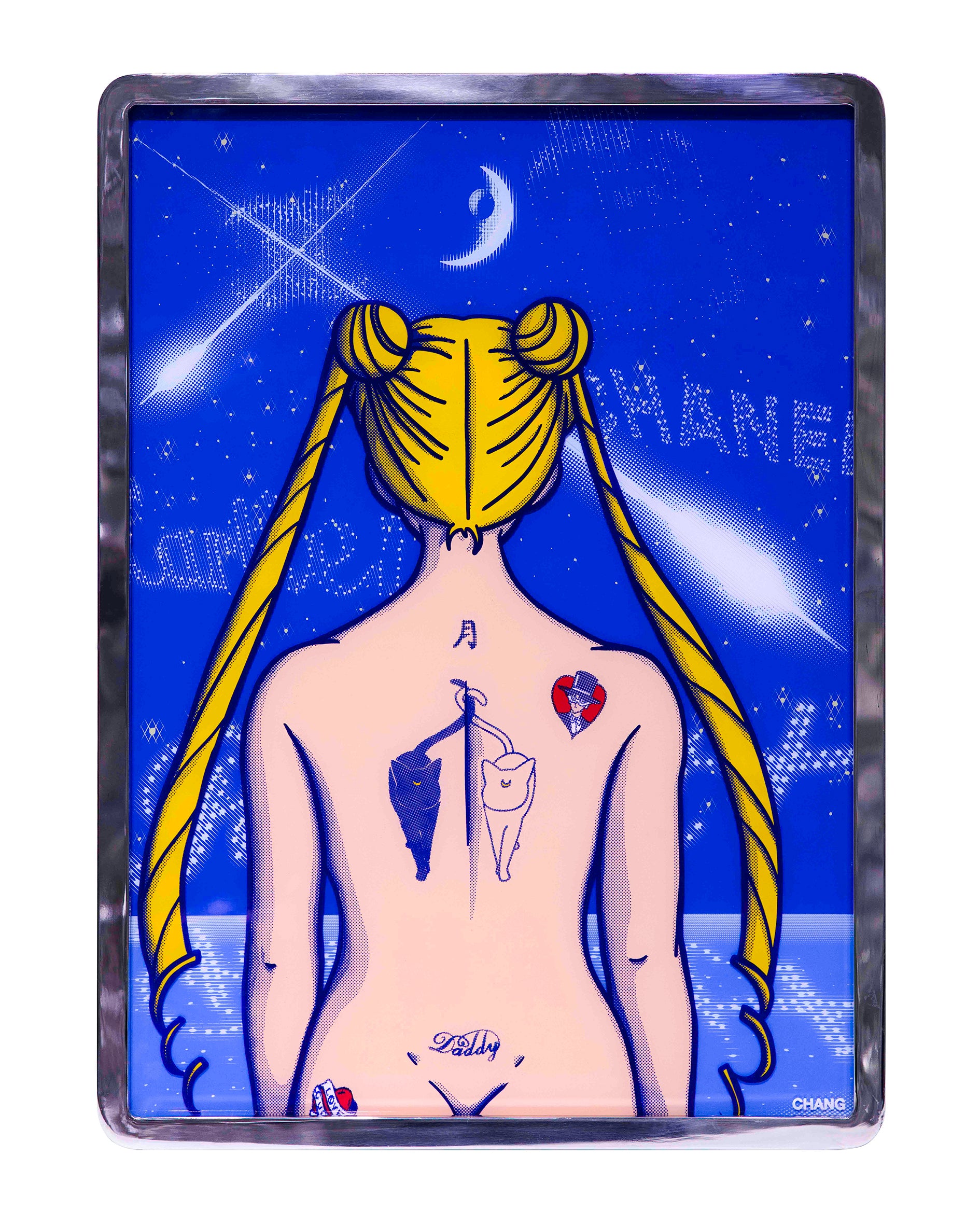
$72,200.00
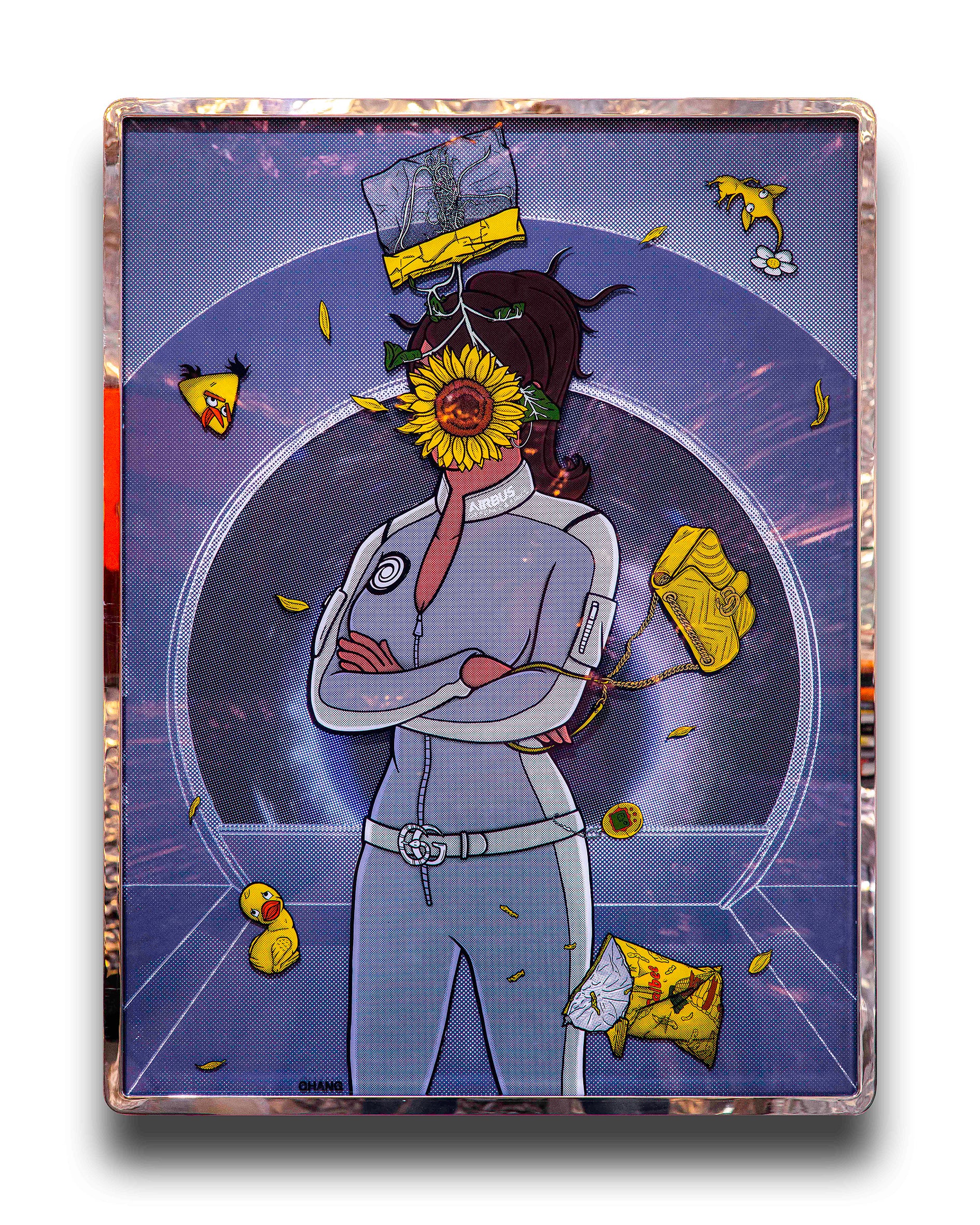
$120,100.00
My “Space Rich” series was inspired by my past three years of living in Hong Kong, in what I felt to be complete isolation from the rest of the world.
In this period of isolation, my childhood fascination with space travel—especially travel to Mars—often came to the forefront of my mind. I would imagine things like what an astronaut would feel on their journey. Would they feel a sense of isolaton a hundred times more acute than what I felt in my “grounded” isolation because of the sheer physical distance separating Earth and Mars? Or would they rather feel a sense of immense freedom because outer space is so infinite both in physical reality and in our human imagination?
I started doing more thought experiments of what it would be like for a “layperson” like me to travel to outer space. Every time I imagined myself in space, I felt less anxious. This became a sort of “vacation” for my mind during this tough period because I could put my problems into perspective—I was just living on a “pale blue dot” within an infinite expanse.
But my imaginative forays into this “infinite expanse” soon led me to think more deeply in a different direction as well, and I realized that, in many ways, my fascination with space and its seeming sublimity is merely“romanticized,” and I would not be carefree and happy just by traveling to Mars in reality. Earth is my home, and despite all the natural and man-made disasters that seem to be catapulting the planet to a point of no return, Earth still contains all the people and places I love, not to mention all the things I need to survive—oxygen, edible food, gravity, warmth. Mars is not currently habitable for humans—we don’t even know if food can be grown there to sustain colonies. As such, despite my fascination with having an “infinite home” in space where I can leave my anxieties behind, this remains a pipe dream.
As I thought more about what deep-seated urges made me fantasize about living in Mars, I realized that perhaps this was just the most extreme version of what I and my fellow millennials are already doing on a daily basis in our world dominated by instant information and social media—that is, “escaping” to cyberspace by adopting a consciously or not so consciously curated persona online, and detaching ourselves from our reality.
I chose the ubiquitous scene of a millennial staring at their phone as my jumping-off point for this series, situating this earthly scene visually within the backdrop of Mars. The visual pun of the Apple iPhone obscuring the central figure’s face, alluding to the apple obscuring the central figure in surrealist René Magritte’s famous “Son of Man,” came almost instantly as I imagined how, even when in Mars, my central figure would likely still stare at or see the environment through the lens of the phone instead of taking in the extreme landscape around them with their senses. This is what I often see others and catch myself doing, even in the most beautiful places on earth. Perhaps, even when we achieve the most extreme form of “detachment” from our reality on earth by traveling to and living on Mars, we would still just be looking at our phones for their virtual images of what is around us.
Our current obsession with virtual reality over physical reality made me consider my approach to color differently in this series. It occurred to me that my usual red-green colorblind approach to choosing color acted as a type of “filter” for these works which all have Mars, the red planet, as a backdrop. Mars is visually made up of different shades of red that I cannot distinguish, so I had to rely solely on my knowledge of color theory and on contrast recognition to produce my compositions. The inadvertent visual “filter” I applied to my works neatly mirrors the point I wanted to make about social media creating “filters” and “echo chambers” enveloping us that become more real to us than reality.
After putting my core figure on Mars, I thought in another direction again, this time about the recent news I read about billionaires all scrambling to invest in space exploration and to travel to space themselves—because Earth is apparently not big enough to contain so much money and power. I thought space travel for the rich represented another type of detachment from reality, one that is only enabled by immense wealth. I tried to represent this expensive privilege to be “above” all others on earth metaphorically and physically by adding recognizable brands and consumer icons in my Mars backdrop.
This ties in visually to my usual practice of incorporating symbols of global consumer culture in my works and, at the same time, brings me back to my initial thought experiments about space travel. In the end, traveling to and living on Mars is a pipe dream not just because of the physical impossibility of it—even if Mars were habitable, it would either only be accessible to the richest people in the world or eventually be turned into another world dominated by ubiquitous consumerism like the earth we live in today. In such a landscape, my central figure would continue to stare at their phone, equally lost in a virtual world, but just in a different cosmic setting.
Finally, I would like to mention that I allude to Magritte and surrealism in the series because I felt a strong urge to emulate the surrealists to reach inward and draw out subjective images to help me make sense of global events like the pandemic, the climate crisis, and Russia’s invasion of Ukraine. I felt that the world cast a sort of surrealist “filter” on my artistic perspective in the last three years. Beyond my visual and iconographic allusion to surrealist paintings, the individual figures, icons, and landscapes I ended up depicting are, as per my usual practice, lifted from reality and far from surreal, but it was surreal to me that the resulting visual amalgamation of incongruous elements like luxury brands and the barren landscape of Mars somehow made sense. In a time when the real world seems ludicrous and unbelievable, perhaps the only thing for us to do is really just to detach ourselves from reality by escaping into our phones, escaping to Mars—or both.